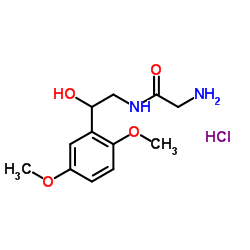Orthostatic effects of midodrine versus L-NAME on cerebral blood flow and the renin-angiotensin-aldosterone system in tetraplegia.
Jill M Wecht, Miroslav Radulovic, Dwindally Rosado-Rivera, Run-Lin Zhang, Michael F LaFountaine, William A Bauman
Index: Arch. Phys. Med. Rehabil. 92(11) , 1789-95, (2011)
Full Text: HTML
Abstract
To compare responses to head-up tilt (HUT) in individuals with chronic tetraplegia after midodrine hydrochloride (10 mg) versus nitro-L-arginine methyl ester (L-NAME, 1 mg/kg) administration.Prospective comparative drug trial.Veterans Affairs medical center.Participants (N=7) were studied during 3 laboratory visits: no drug, midodrine (administered orally 30 min before HUT), and L-NAME (infused over a 60-min period).Anti-hypotensive agents, midodrine, and L-NAME.Mean arterial pressure (MAP), cerebral blood flow (CBF), and markers of the renin-angiotensin-aldosterone system (RAAS, plasma renin and serum aldosterone) were measured in the supine position at baseline (BL) and during a 45° HUT maneuver. Data were compared between BL and the average of 3 assessments collected during HUT.Orthostatic MAP and CBF were increased with the midodrine and L-NAME groups compared with the no drug trial and the relationship between the change in MAP and CBF was significant (r=0.770; P<0.001). Both L-NAME and midodrine appeared to suppress the post-HUT RAAS response compared with no drug.Increasing orthostatic blood pressure with L-NAME or midodrine appears to increase CBF and suppress the RAAS during HUT in persons with tetraplegia, although more data are needed to confirm these preliminary findings.Copyright © 2011 American Congress of Rehabilitation Medicine. Published by Elsevier Inc. All rights reserved.
Related Compounds
| Structure | Name/CAS No. | Molecular Formula | Articles |
|---|---|---|---|
 |
UNII:59JV96YTXV
CAS:3092-17-9 |
C12H19ClN2O4 |
|
The role of eNOS phosphorylation in causing drug-induced vas...
2014-06-01 [Toxicol. Pathol. 42(4) , 709-724, (2014)] |
|
MicroRNA changes in rat mesentery and serum associated with ...
2012-08-01 [Toxicol. Appl. Pharmacol. 262(3) , 310-20, (2012)] |
|
Ion selective phosphotungestate and beta-cyclodextrin based ...
2013-01-01 [Acta Chim. Slov. 60(2) , 256-62, (2013)] |
|
Efficacy of atomoxetine versus midodrine for the treatment o...
2014-12-01 [Hypertension 64(6) , 1235-40, (2014)] |
|
A prospective, 1-year follow-up study of postural tachycardi...
2012-08-01 [Mayo Clin. Proc. 87(8) , 746-52, (2012)] |